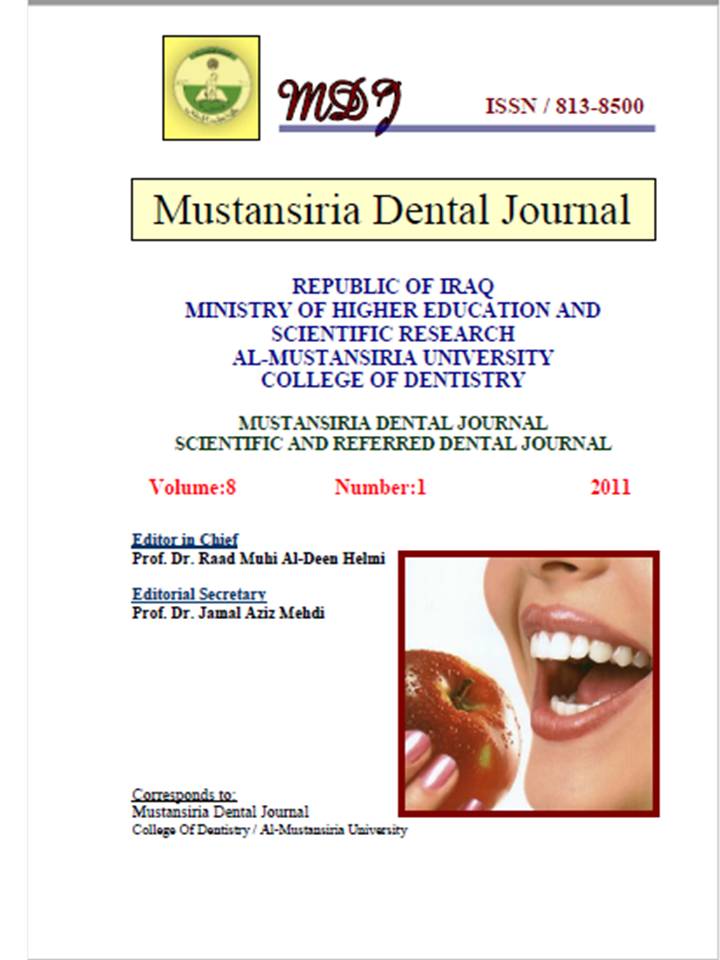Occurrence of intermediate bifurcational ridges and attached cementicles on furcation area of Iraqi mandibular molars
DOI:
https://doi.org/10.32828/mdj.v8i1.289Keywords:
Key words: Prevalence, Cementicles, Intermediate bifurcational ridge, Furcation area.Abstract
Successful treatment of molar furcation defects remains a challenge in clinical
practice. Knowledge of anatomic factors facilitates predictable management of
furcation involvement lesions. Intermediate bifurcational ridge (IBRs) and
cementicles are of those anatomical variations which considered as problems in
progression treatment of the disease.
The present study was carried out to investigate the prevalence of IBRs and
cementicles in Iraqi mandibular molars. The sample used in the study included 498
extracted mandibular molars. The results revealed that the prevalence IBRs was
306/498 teeth (61.44%), and that for the cementicles was 204/498 teeth (40.96%).
The total sample was allocated into two groups:
Group 1 included 313 molars (165 mandibular first molar and 148 mandibular
second molar) , The teeth of group 1 were extracted because of caries and
pulpal lesions, while
Group 2 included 185 mandibular molars ( 98 first molar and 87 second molar).
The reason of extraction of the teeth of group 2 was periodontal disease (different
degrees of furcation involvement). For group 1 the results showed that 111/313
(35.46%) of mandibular molars had attached cementicles in furcation area and
185/313 (59.10%) were affected by IBRs. While in group 2 the percentage of both
anomalies was higher than that of group 1. In group 2 the results revealed that 93/185
(50.27%) of the teeth had cementicles and 121/185 (65.4%) were recorded with
IBRs.
These results give an indication that the prevalence of cem. and IBRs high
enough to be of clinical importance.

Downloads
Published
Issue
Section
License
The Journal of Mustansiria Dental Journal is an open-access journal that all contents are free of charge. Articles of this journal are licensed under the terms of the Creative Commons Attribution International Public License CC-BY 4.0 (https://creativecommons.org/licenses/by/4.0/legalcode) that licensees are unrestrictly allowed to search, download, share, distribute, print, or link to the full texts of the articles, crawl them for indexing and reproduce any medium of the articles provided that they give the author(s) proper credits (citation). The journal allows the author(s) to retain the copyright of their published article.
Creative Commons-Attribution (BY)








